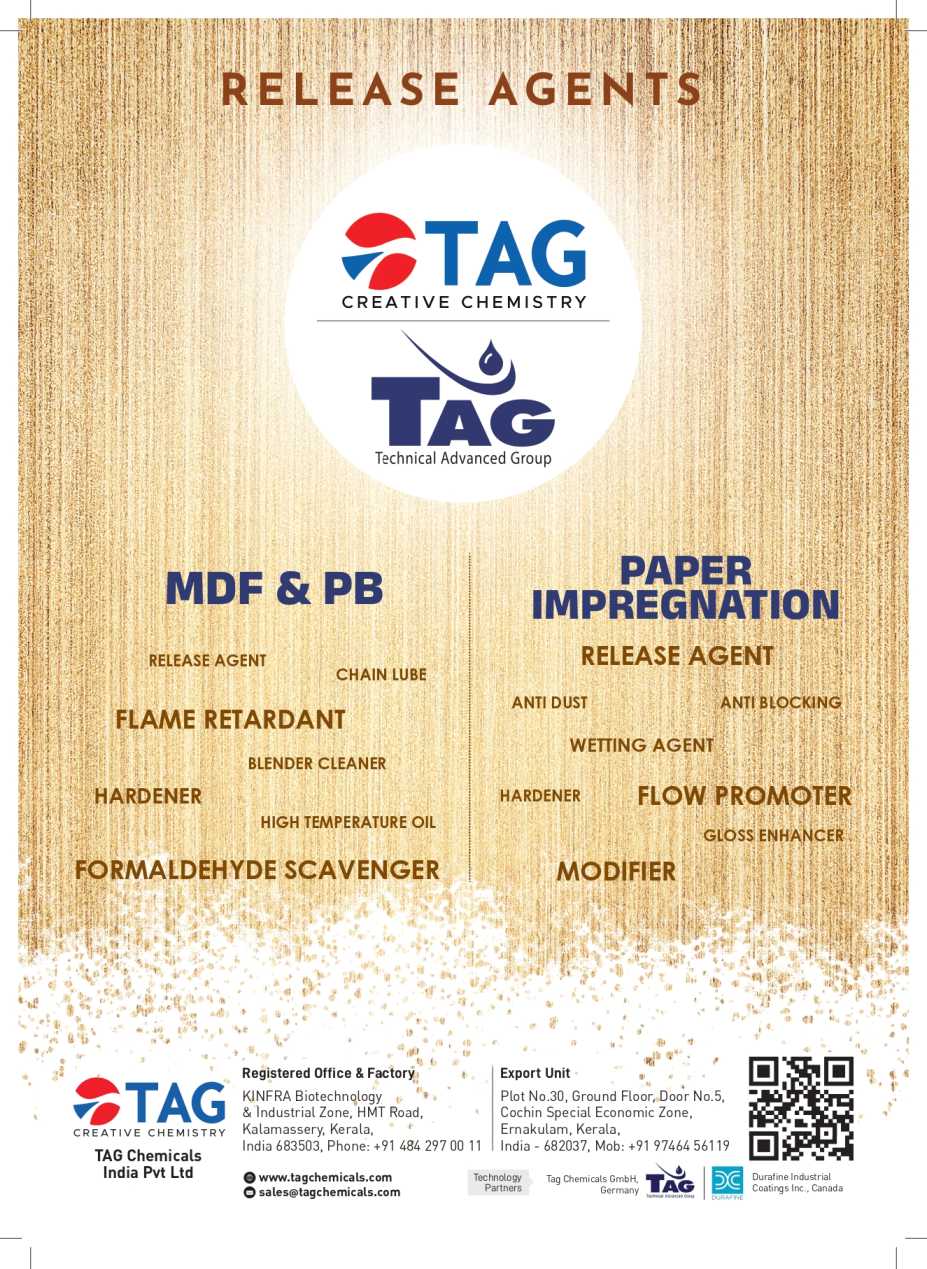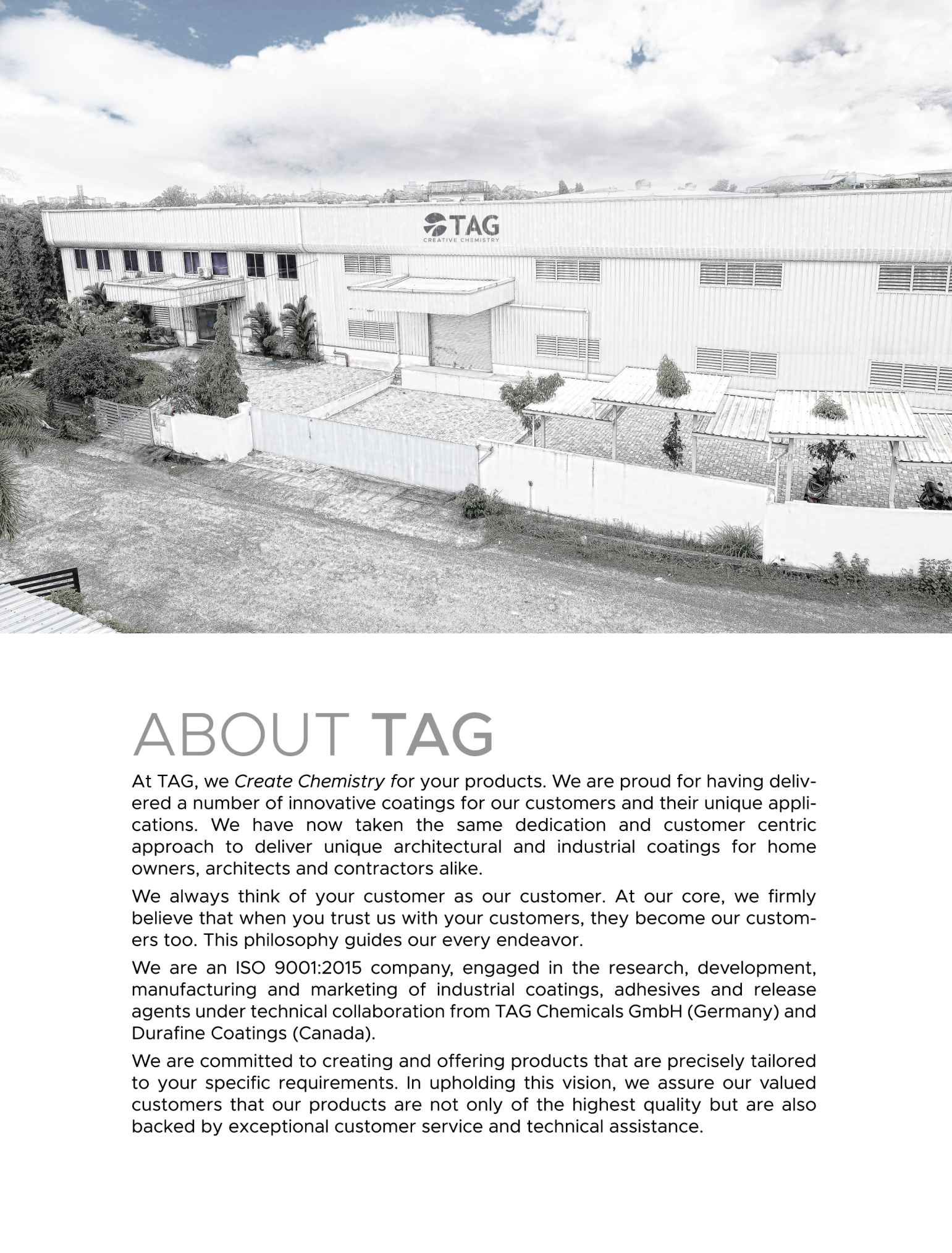
Way forward for plywood industries to ensure sustainable and cost-effective raw material
- August 9, 2022
- 0
Way forward for plywood industries to ensure sustainable and
cost-effective raw material supply – and remain competitive overall
Current Scenario
The plywood industry (PWI) in India is facing unprecedented levels of problems during the recent years. During the last two and half decades, factories have been using whatever agroforestry (AF) timber resources made available through the efforts put in mainly by the paper & pulp industry sector of our country. PWI as such, had not seriously taken steps to think about sustainable & cost-effective timber availability as an expected problem for the future. And that future is now here, and facing us head-on.
Today, large MDF plants are mushrooming quickly in many locations across the country, and requirements of paper & pulp industries are also increasing rapidly, with the change in geopolitical situations all over the world. As import of raw material (RM) has become a costly affair, more & more industries are shifting to domestic sources for their timber & wood RM needs. The PWI cannot escape from this reality anymore, and we have to face it and start immediately acting on preparations for the future, now at least.
‘The best time to plant a tree was 20 years back. The next best time, is now.’ – Chinese Proverb.
Just as we have extreme dependency on Chinese machinery & processes in our plywood manufacturing sector, let us try to learn from Chinese proverbs too, as our industry has always been fascinated with their machines, processes & technology, and never tried to create these for ourselves as yet, barring few Indian companies in machinery & process optimisations.
Things in PWI control
- Machinery availability (domestic or imported) & purchase decision.
- Labour availability & output, to a large extent.
- Ability to create awareness and change marketing thought-process, & engage with supply chain in a more logical way. Creation of better stakeholder understanding and support structure by pushing logic over emotional aspects.
- Ability to change mindset and learn the aspects of agroforestry & its possibilities.
- Ability to change mindset and hire advisors on timber RM strategies & optimisation.
- Understanding the fact that one 10-daylight hot press using eucalyptus logs for 24 hours of 18mm thick plywood production requires a standing stock of 1,125 hectares (2,800 acres) at 5-year rotation of 20 Tons/Ha/Annum yield.
- Understand & realise that there is increasing competition for wood/timber resources from other wood RM users, big & small.
- Ability to form a roadmap for the future & act on it with conviction and positivity.
Things not in PWI control
- Chemical prices.
- Global geopolitical imbalances.
- Inconsistency of governance at the Centre & States.
- Non-reliability of current policy structures & their non-uniformity.
- Ambiguous implementation of policies and facilitations, whatsoever.
- Government cannot be (& need not be) depended, as the Forest Policy of 1988 has clearly stated that RM resources for WBI have to be looked out for by the industry itself.
- Inability of PWI Associations to step up to the situation in unity.
- Competition for resources from other wood resource users such as MDF, Particle Boards, Paper & Pulp industries, & large furniture manufacturers in addition to other wood-based industries (WBI) such as wooden handicrafts, tools, fixtures & small furniture manufacturers etc.
What can the PWI do?
- Engage techno-commercial advisors to make strategy for ensuring RM supply.
- Learn and act on what has to be done for better direct engagement with AF farmers.
- Provide support to existing AF farmers by organising awareness, subsidising seed/sapling supplies.
- Enhance confidence-building through buy-back arrangements from AF farmers.
- Make arrangements to choose plant & produce plywood-specific clones for AF farmer buy-back arrangements.
- Have a wood-resources department which will take care of all coordination, follow-ups, tracking and standard operations procedures (SOPs) with regard to the above points.
- Affiliated State-based Associations may be asked to engage legal advice experts to create a framework in order to present the case of PWI de-licensing, de-regulation and facilitation of smooth & uniform operations. Appropriate legal representations have to be made and delivered to DIPP, GoI as well as all the relevant governance departments to plug the confusions with regard to various aspects of PWI functioning.
- AIPMA may take the above activities with the Centre too.
Future Considerations
It is very much necessary for PWI to invest time & effort into ensuring consistent RM availability for its steady running as well as growth. With the advancement of education, increased awareness, earning potential and increased spending power, the requirement for plywood & panels is estimated to touch 57.5 million cubic meters by 2030 (FIPPI). The current projected consumption is around 12.5 million cubic meters. In a short span of 8 years, the plywood and panels consumption is projected to grow by more than 4.5 times the current levels. In such a scenario, the current phase is a great opportunity for PWI to put their full & sincere efforts into augmenting timber RM resources for future needs. All PWI Associations may come together and form a roadmap in order to make India a wood-independent country by the next 20 years. Let us remind ourselves again of the Chinese proverb of planting trees. Jai Hind !

टिकाऊ और लागत प्रभावी कच्चे माल की आपूर्ति सुनिश्चित करने और
समग्र रूप से प्रतिस्पर्धी बने रहने के लिए प्लाईवुड उद्योगों के लिए आगे का रास्ता।
वर्तमान परिदृश्य
भारत में प्लाईवुड उद्योग (PWI) हाल के वर्षों में अभूतपूर्व स्तर की समस्याओं का सामना कर रहा है। पिछले ढाई दशकों के दौरान, कारखाने मुख्य रूप से हमारे देश के कागज और लुगदी उद्योग क्षेत्र द्वारा किए गए प्रयासों के माध्यम से उपलब्ध कराए गए कृषि वानिकी (AF) लकड़ी के संसाधनों का उपयोग कर रहे हैं। पीडब्ल्यूआई ने भविष्य के लिए संभावित समस्या के रूप में टिकाऊ और लागत प्रभावी लकड़ी की उपलब्धता के बारे में सोचने के लिए गंभीरता से कदम नहीं उठाए थे। और वह भविष्य अब यहाँ है, और हमारा सामना आमने-सामने है।
आज, देश भर में कई स्थानों पर बड़े एमडीएफ संयंत्र तेजी से बढ़ रहे हैं, और दुनिया भर में भू-राजनीतिक स्थितियों में बदलाव के साथ, कागज और लुगदी उद्योगों की आवश्यकताएं भी तेजी से बढ़ रही हैं। चूंकि कच्चे माल (RM) का आयात एक महंगा मामला बन गया है, इसलिए अधिक से अधिक उद्योग अपनी लकड़ी और लकड़ी की RM जरूरतों के लिए घरेलू स्रोतों की ओर रुख कर रहे हैं। पीडब्ल्यूआई अब इस वास्तविकता से बच नहीं सकता है, और हमें इसका सामना करना ही होगा और भविष्य की तैयारियों पर तुरंत कार्रवाई शुरू करनी होगी, तत्काल।
‘पेड़ लगाने का सबसे अच्छा समय 20 साल पहले था। अगला सबसे अच्छा समय अब है।’ – चीनी कहावत।
जिस तरह हमारे प्लाईवुड निर्माण क्षेत्र में चीनी मशीनरी और प्रक्रियाओं पर अत्यधिक निर्भरता है, आइए हम चीनी कहावतों से भी सीखने की कोशिश करें, क्योंकि हमारा उद्योग हमेशा उनकी मशीनों, प्रक्रियाओं और प्रौद्योगिकी से मोहित रहा है, और अभी तक मशीनरी और प्रक्रिया अनुकूलन में कुछ भारतीय कंपनियों को छोड़कर हमने कभी भी इन्हें अपने लिए बनाने की कोशिश नहीं की।
पीडब्ल्यूआई के नियंत्रण में चीजें
- मशीनरी की उपलब्धता (घरेलू या आयातित) और उनका खरीद निर्णय।
- श्रम उपलब्धता और उत्पादन, काफी हद तक।
- जागरूकता पैदा करने और विपणन बिक्री की विचार-प्रक्रिया को बदलने और आपूर्ति श्रृंखला के साथ अधिक तार्किक तरीके से जुड़ने की क्षमता। भावनात्मक पहलुओं पर तर्क को आगे बढ़ाते हुए बेहतर हितधारक समझ और समर्थन संरचना का निर्माण।
- मानसिकता बदलने और कृषि वानिकी के पहलुओं और इसकी संभावनाओं को सीखने की क्षमता।
- टिम्बर (RM) संबंधी रणनीतियों और अनुकूलन पर मानसिकता बदलने और सलाहकारों को नियुक्त करने की क्षमता।
- इस तथ्य को समझना कि एक 10-DL की हॉट प्रेस में 24 घंटे 18 मिमी मोटी प्लाईवुड उत्पादन के लिए यूकेलिप्टस लॉग का उपयोग करने वाले को 20 टन/हेक्टेयर वार्षिक उपज के 5-वर्ष के रोटेशन पर 1,125 हेक्टेयर (2,800 एकड़) के स्थायी स्टॉक की आवश्यकता होती है।
- समझें और महसूस करें कि लकड़ी/लकड़ी के संसाधनों के लिए अन्य लकड़ी के कच्चे माल के बड़े और छोटे उपयोगकर्ताओं से प्रतिस्पर्धा बढ़ रही है।
- भविष्य के लिए एक रोडमैप बनाने और उस पर दृढ़ विश्वास और सकारात्मकता के साथ कार्य करने की क्षमता।
चीजें जो पीडब्ल्यूआई के नियंत्रण में नहीं हैं
- रासायनिक कीमतें।
- वैश्विक भू-राजनीतिक असंतुलन।
- केंद्र और राज्यों में शासन की असंगति।
- मौजूदा नीति संरचनाओं की गैर-विश्वसनीयता और उनकी गैर-एकरूपता।
- नीतियों और सुविधाओं का अस्पष्ट कार्यान्वयन, जो भी हो।
- सरकार पर निर्भर नहीं हुआ जा सकता (और होने की आवश्यकता भी नहीं है), क्योंकि 1988 की वन नीति में स्पष्ट रूप से कहा गया है कि WBI के लिए RM संसाधनों को उद्योग द्वारा ही देखा जाना है।
- PWI संघों की एकता की स्थिति में कदम रखने में असमर्थता।
- हस्तशिल्प, उपकरण, जुड़नार और छोटे फर्नीचर निर्माताओं आदि जैसे अन्य लकड़ी आधारित उद्योगों (WBI) के अलावा अन्य लकड़ी संसाधन उपयोगकर्ताओं जैसे MDF, कण बोर्ड, कागज और लुगदी उद्योग, और बड़े फर्नीचर निर्माताओं से लकड़ी के संसाधनों के लिए प्रतिस्पर्धा।
PWI क्या कर सकता है?
- RM आपूर्ति सुनिश्चित करने के लिए रणनीति बनाने के लिए तकनीकी-वाणिज्यिक सलाहकारों को शामिल करें।
- AF किसानों के साथ बेहतर प्रत्यक्ष जुड़ाव के लिए सीखें और कार्य करें।
- जागरूकता का आयोजन करके, बीज/पौधों की आपूर्ति पर सब्सिडी देकर मौजूदा AF किसानों को सहायता प्रदान करना।
- AF किसानों से बाय-बैक व्यवस्था के माध्यम से विश्वास-निर्माण को बढ़ाएं।
- AF किसान से बाय-बैक व्यवस्था के साथ पौधे चुनने और प्लाईवुड-विशिष्ट क्लोन तैयार करने की व्यवस्था करें।
- एक लकड़ी-संसाधन विभाग बनाएं जो उपरोक्त बिंदुओं के संबंध में सभी समन्वय, अनुवर्ती, ट्रैकिंग और मानक संचालन प्रक्रियाओं (एसओपी) का ख्याल रखे।
- संबद्ध राज्य-आधारित संघों को कानूनी सलाह विशेषज्ञों को शामिल करने के लिए कहा जा सकता है ताकि PWI डी-लाइसेंसिंग, डी-विनियमन और सुचारू और समान संचालन की सुविधा के मामले को प्रस्तुत करने के लिए एक ढांचा तैयार किया जा सके। PWI कामकाज के विभिन्न पहलुओं के संबंध में भ्रम को दूर करने के लिए उचित कानूनी अभ्यावेदन किया जाना चाहिए और DIPP, भारत सरकार के साथ-साथ सभी संबंधित शासन विभागों को दिया जाना चाहिए।
- AIPMA उपरोक्त गतिविधियों को केंद्र के साथ भी ले सकता है।
भविष्य के विचार
PWI के लिए यह बहुत आवश्यक है कि वह अपने सुचारु कार्य कलाप के साथ-साथ विकास के लिए निरंतर RM उपलब्धता सुनिश्चित करने के लिए समय और प्रयास का निवेश करे। शिक्षा की प्रगति, जागरूकता में वृद्धि, कमाई की क्षमता और खर्च करने की क्षमता में वृद्धि के साथ, प्लाईवुड और पैनलों की आवश्यकता 2030 (FIPPI) तक 57.5 मिलियन क्यूबिक मीटर तक पहुंचने का अनुमान है। वर्तमान अनुमानित खपत लगभग 12.5 मिलियन क्यूबिक मीटर है। 8 वर्षों की छोटी अवधि में, प्लाईवुड और पैनल की खपत मौजूदा स्तरों से 4.5 गुना से अधिक बढ़ने का अनुमान है। ऐसे परिदृश्य में, वर्तमान चरण पीडब्ल्यूआई के लिए भविष्य की जरूरतों के लिए टिम्बर RM संसाधनों को बढ़ाने में अपने पूर्ण और ईमानदारी से प्रयास करने का एक बड़ा अवसर है। अगले 20 वर्षों तक भारत को लकड़ी में स्वतंत्र देश बनाने के लिए सभी पीडब्ल्यूआई संघ एक साथ आ सकते हैं और एक रोडमैप बना सकते हैं। आइए हम खुद को फिर से पेड़ लगाने की चीनी कहावत की याद दिलाएं।
जय हिन्द !
































































